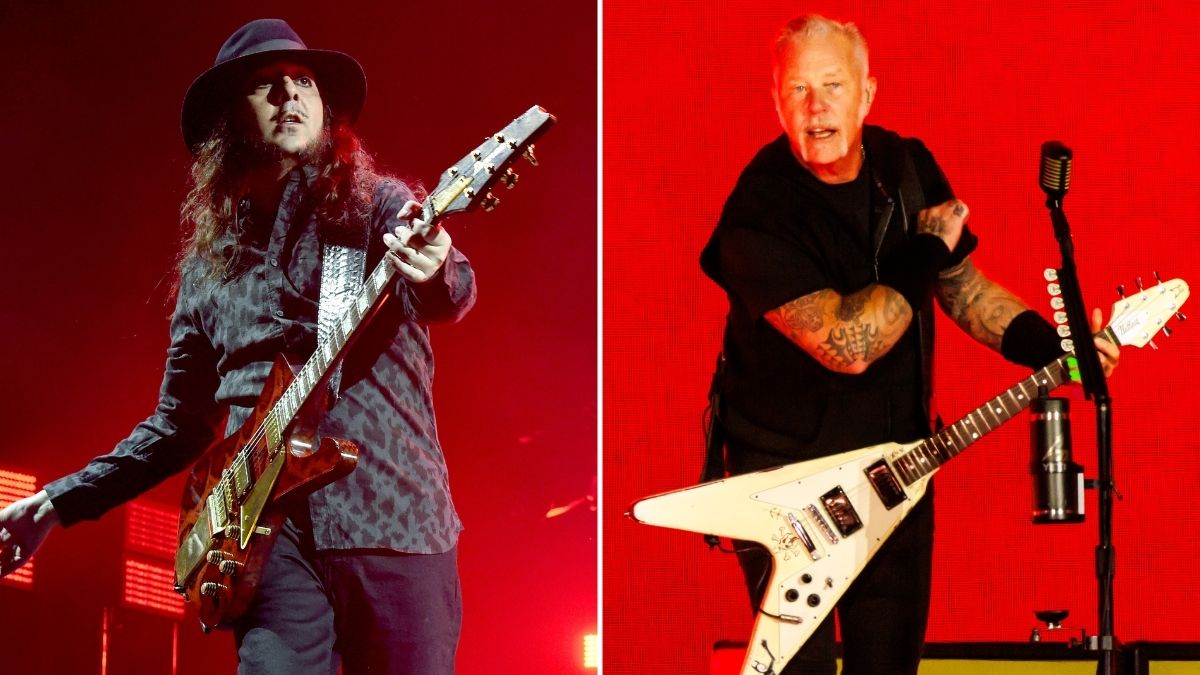How Dead Sara take Joni Mitchell’s approach to alternate tunings and apply it to the ferocious world of rock ’n’ roll
They'll be supporting Slash, Myles Kennedy and co, and their third album Ain’t It Tragic is essential listening for an example of how a folk technique can inform an avowedly rock sound

When was the last time you discovered a guitar player that made your chest rattle and the hair on your neck stand up?
If you’ve truly kept your ear to the musical soil in the last decade, there’s a pretty good chance Siouxsie Medley has done both. She and leather-lunged frontwoman Emily Armstrong lead the L.A. born-and-bred rock ’n’ roll trio Dead Sara along with drummer/producer Sean Friday.
Dead Sara first broke through on active rock radio in 2012 with the single Weatherman from their self-titled debut album. After a tempestuous period of independent releases and label issues (which Armstrong chalks up to “bad management” at the time), Dead Sara finally found a stable home at Warner Records, who released the band’s third full-length album, Ain’t It Tragic, in September.
Medley’s main studio guitar is a solid black Les Paul, substituted on the road with a much lighter Gibson Florentine after the Les Paul broke her ribs on tour due to her kinetic stage presence. “Twice,” Medley asserts with a mile-wide smile.
After Armstrong developed an interest in alternate tunings influenced by folk music and the many tunings of Joni Mitchell, she and Medley applied that adventurousness to electric guitar arrangements and discovered what would become Dead Sara’s signature tuning: “high G,” in which the low E string is turned up to a G – the secret to the power of the Weatherman riff.
Medley says folk-influenced open tunings are an essential element of Dead Sara’s guitar attack – allowing for drones and unconventional fretwork that EADGBE doesn’t enable. “Standard is the most confusing tuning for me,” Medley says. “Open tunings just make more sense to how my brain is wired, so I just make up tunings.”
Slash asked for us. Apparently he’s a big fan!
Siouxsie Medley
Despite a formidable pedalboard, Medley’s default sound is either a direct-to-amp tone (“2/3 of my set” she says) or a single Super Fuzz pedal. The rest of the sound is her fingers and choices, with the pedals acting as a supplement.
All the latest guitar news, interviews, lessons, reviews, deals and more, direct to your inbox!
Armstrong, on the other hand, says she has a “love/hate” relationship with playing guitar live and acknowledges Medley’s role as the guitarist, but is a significant contributor to the band’s recorded layers of woven guitar, especially on Ain’t It Tragic. “Sometimes Sean and I would be in the studio and we’d need to redo a guitar part…but I honestly don’t remember which parts [on the finished album] are me and which are Siouxsie.”
Starting in February, Dead Sara will be supporting Slash on his American tour backed by Myles Kennedy & The Conspirators. “Slash asked for us,” Medley says. “Apparently he’s a big fan!”
- Ain’t It Tragic is out now via Warner.
